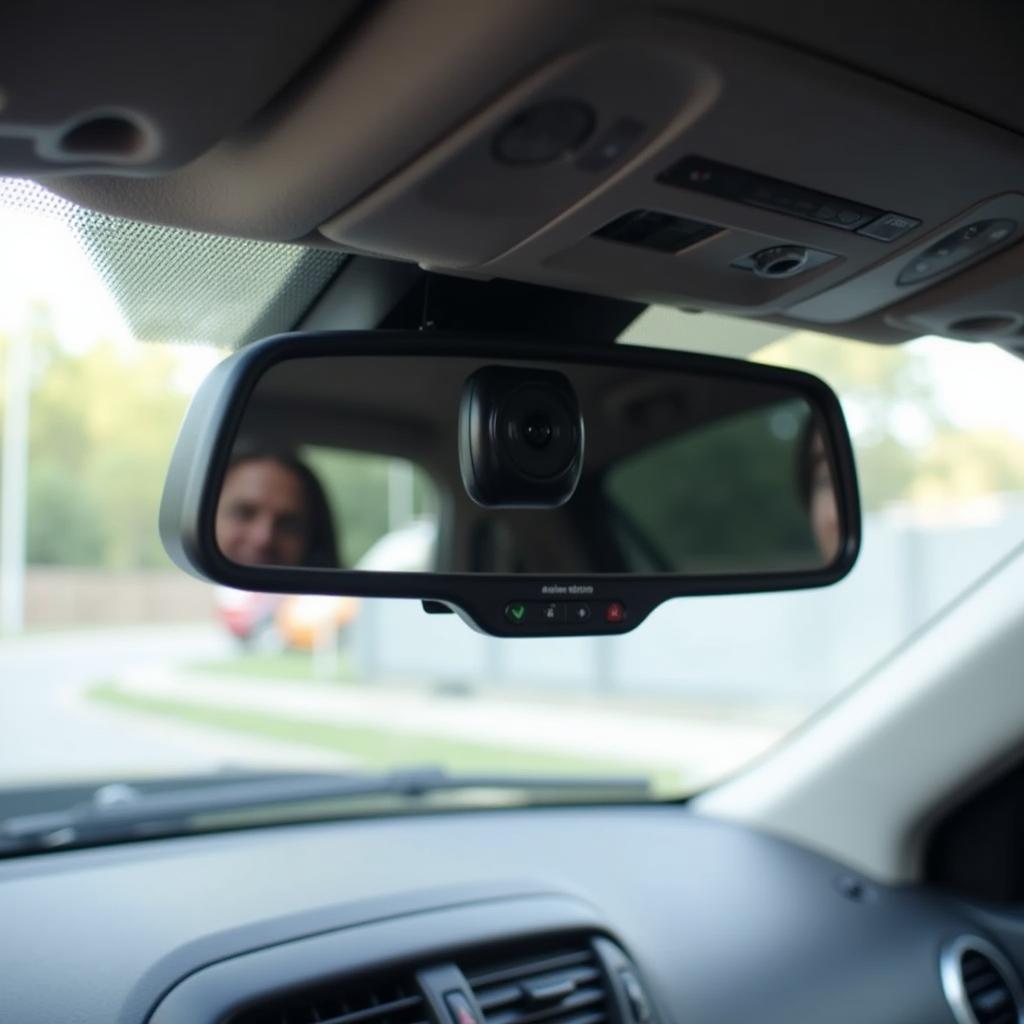Forward collision warning with brake assist is a critical safety feature that can prevent or mitigate accidents. While increasingly common in new vehicles, many car owners are opting for aftermarket systems to enhance the safety of their older models. This guide delves into the world of aftermarket forward collision warning with brake assist, covering everything from understanding the technology to installation and common concerns.
Understanding Forward Collision Warning with Brake Assist
Before diving into the aftermarket aspect, it’s crucial to understand how this system works. Essentially, it uses sensors, typically cameras or radar, mounted on the front of your vehicle to monitor the distance to the car in front of you. If the system detects a potential collision, it issues visual and audible warnings to alert the driver. Should the driver fail to react, the brake assist component automatically engages the brakes, slowing down the vehicle and potentially avoiding or lessening the impact of a collision.
Why Choose an Aftermarket System?
While many new cars come standard with forward collision warning and brake assist, older vehicles often lack these vital safety features. This is where aftermarket systems come in, allowing car owners to upgrade their vehicles and potentially benefit from:
- Enhanced Safety: This is the primary reason for opting for an aftermarket system. By providing an extra layer of protection, these systems can significantly reduce the risk of front-end collisions.
- Reduced Insurance Premiums: In some cases, installing an aftermarket forward collision warning system with brake assist might qualify you for discounts on your car insurance premiums. Contact your insurance provider to see if you’re eligible.
- Increased Resale Value: Safety features are a major selling point for used cars. Installing an aftermarket system can increase your vehicle’s value and make it more attractive to potential buyers.
 Aftermarket Collision Warning System
Aftermarket Collision Warning System
Choosing the Right Aftermarket System
The market offers a variety of aftermarket forward collision warning systems with brake assist, each with unique features and price points. Here are some key factors to consider:
- Sensor Type: As mentioned earlier, systems typically use either cameras or radar. Camera-based systems are generally more affordable, while radar systems offer superior performance in challenging weather conditions.
- Warning Types: Systems may offer various types of warnings, including visual displays, audible alerts, and even haptic feedback through vibrations in the steering wheel or seat.
- Brake Assist Sensitivity: Some systems offer adjustable brake assist sensitivity levels, allowing you to customize how early or aggressively the brakes engage.
- Compatibility: Not all aftermarket systems are compatible with every vehicle. Ensure the system you choose is compatible with your car’s make, model, and year.
Installation: DIY or Professional?
While some aftermarket systems come with relatively straightforward installation instructions, it’s generally recommended to have a qualified mechanic handle the installation. Improper installation can negatively impact the system’s effectiveness and potentially even cause malfunctions within your vehicle’s electronics.
Addressing Common Concerns
- False Alarms: One common concern with these systems is the possibility of false alarms, especially in challenging driving conditions like heavy rain or snow. However, reputable aftermarket systems are designed to minimize false positives.
- System Malfunctions: Like any electronic system, there’s always a risk of malfunction. Regular maintenance and choosing a system from a reputable manufacturer can minimize this risk.
- Over-Reliance: While these systems are designed to enhance safety, it’s crucial to remember that they are not substitutes for attentive driving. Drivers should avoid becoming overly reliant on the technology and always maintain control of their vehicles.
Conclusion
Investing in an aftermarket forward collision warning with brake assist system is a proactive step towards enhancing the safety of your vehicle and potentially preventing accidents. While it’s essential to choose a reputable system and ensure professional installation, the added peace of mind and potential safety benefits make it a worthwhile investment for many drivers. Remember to familiarize yourself thoroughly with the system’s features and limitations and always prioritize attentive driving.
For those looking to address other warning light concerns, resources are available to help you understand and manage these situations:
- To learn how to turn off brake switch warning light, visit our guide on “turn off brake switch warning light“.
- If you’re experiencing issues with your VW Passat, our guide on “vw passat brake pad warning light reset” can provide valuable information.
- For Mercedes-Benz owners, our resource on “mercedes benz brake wear warning light” offers insights into addressing brake wear warning lights.

